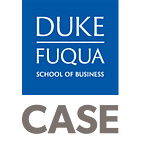One Acre Fund: Getting Ready for Scale
As part of this Scaling Snapshot, see also One Acre Fund’s Organizational Overview, Scaling Strategies, and Scaling Pearls of Wisdom. You can find the full scaling snapshot PDF here.
While Andrew Youn pursued his MBA at Northwestern’s Kellogg School of Management, he had the opportunity to travel to Africa and was exposed to the plight of smallholder farmers whose low yields were leading to hunger and poverty. Motivated by the obvious need and the firm belief that it was possible to develop a financially sustainable market-based solution to improve the productivity and income potential of smallholder farmers, Youn founded One Acre Fund. With financial support from business plan competitions, the Echoing Green fellowship, and individual donors, he moved to Kenya and launched the first pilot of the model in 2006. In 2007, One Acre Fund began testing a new market, Rwanda, and continued focusing on operations in these two countries until a 2011 expansion into Burundi.
Key success factors in positioning One Acre Fund for scale included:
- Focusing on Financial Sustainability: Using a market-based approach. Youn founded One Acre Fund with the belief that smallholder farmers could be excellent customers, so earned income was always a part of the model. Demonstrating a drive toward financially sustainable field operations also helped the organization secure philanthropic funds. [Read more about One Acre Fund’s earned income model.]
- Proving Product and Demand: Nailing model impact before expansion. One Acre Fund spent its first five years refining, testing, and proving its core bundle in two different markets: Kenya and Rwanda. In order to optimize products, refine metrics, and home in on the most impactful model, it focused on penetration (i.e., adding more farmer clients within an existing site), until attaining a proof- level that warranted expansion.
- Aligning Capital with Stage. The majority of One Acre Fund’s early-stage capital came from “friends and family” and funders open to supporting early validation and scale (such as the Mulago and Jasmine Foundations, providing $100k-300k per year). After its earliest stages, the organization began investing in measurement to prove the impact and cost effectiveness of its model. With this measurement in hand, it was able to attract larger foundation grants as well. One Acre Fund’s Skoll Foundation award in 2010 also provided important scaling capital and a boost for the organization’s profile.
- Thinking Big: Driving a growth mindset. Early in its development, One Acre Fund established the ambitious goal of directly serving one million smallholder farmers by 2020. This goal was larger than the organization would have developed had it relied upon bottoms-up calculations grounded in known financial and capacity constraints and environmental factors. The goal informed One Acre Fund’s growth strategy, energized its internal team, and pushed it to think in different ways about pathways to scale.
- Demonstrating Impact: Robust iteration and measurement processes. One Acre Fund not only has clear metrics for the change it wants to achieve, but also has systems and processes to carefully develop, test, and roll-out new/refined programs or products. The organization stages this testing and rollout to ensure sufficient learning and iteration before fully investing.
One Acre Fund spent its first several years pursuing these strategies, ultimately preparing it to begin to scale significantly around the year 2011. Click here to read about the ways in which HCWH has scaled its impact, including the implications of these strategies for the organization.
Published September March 2019. Find the full Scaling Snapshot PDF at https://rebrand.ly/oneacrefundscaling.
Authored by Erin Worsham, Kimberly Langsam, and Ellen Martin.
